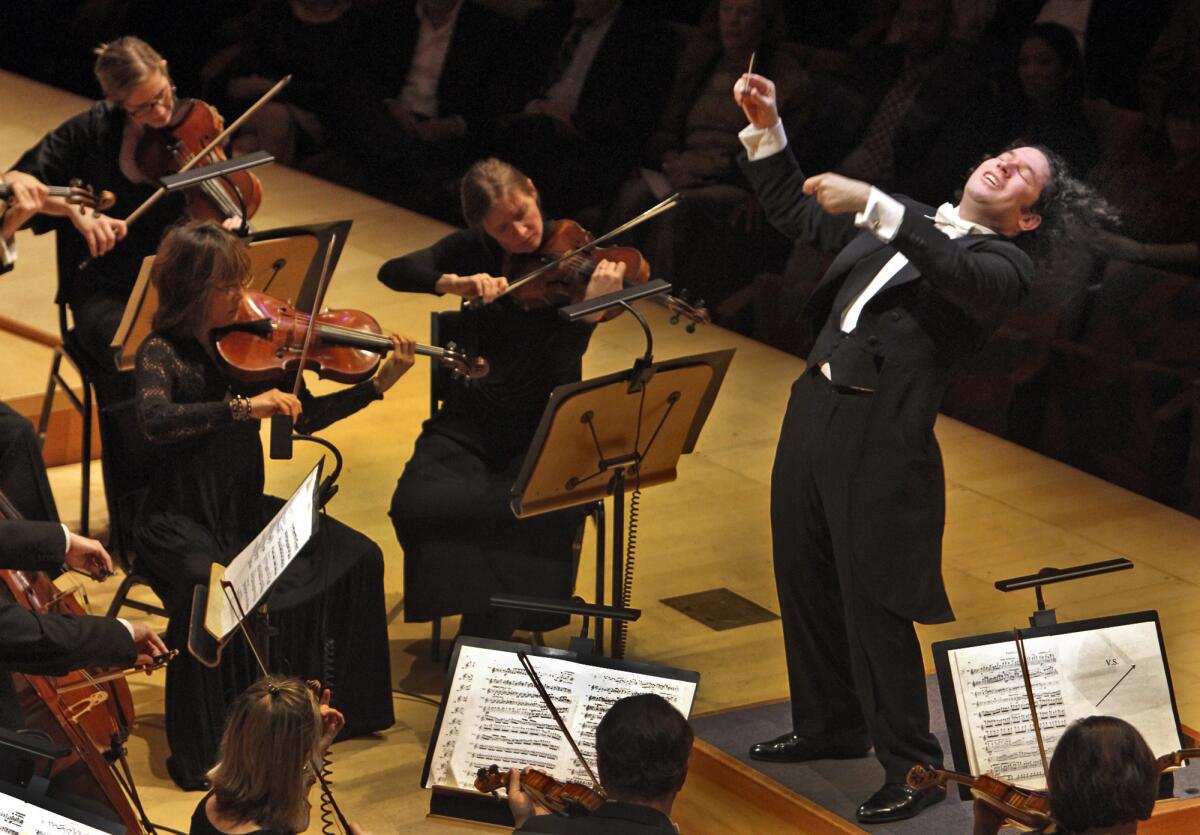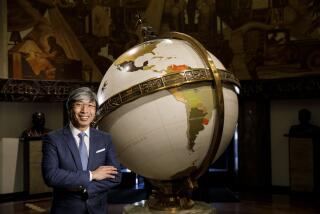Gustavo Dudamel: Through the lens of a Times photographer

Not many people who aren’t musicians can say they’ve been within a few feet of Los Angeles Philharmonic’s music director Gustavo Dudamel while he’s conducting a symphony.
Over the last four years, Los Angeles Times staff photographer Lawrence K. Ho has captured Dudamel at about 45 concerts in Los Angeles, close enough that the young Venezuelan conductor could hear Ho’s camera’s shutter, if not for the blimp photographers use to mask the sound.
A general assignment photographer at The Times for more than 25 years, Ho has extensive experience shooting the arts and especially classical music and dance performances.
A new photo gallery on The Times’ Frameworks website features 23 of Ho’s images taken during Dudamel’s L.A. tenure on the podium -- from Dudamel’s Walt Disney Concert Hall debut through his massive, traveling Mahler Project and his work with youth orchestras.
Ho talked to Culture Monster about how he captures the dynamic conductor for the pages and website of The Times.
PHOTOS: Gustavo Dudamel career in pictures
What was you first impression of Dudamel?
The first time I photographed him was in January of 2007 at his first concert at Disney Hall. He blew me away because here’s this young kid -- I have a kid just about to turn 20 -- and he looks like he’s not much older. Esa-Pekka Salonen was the music director at the time, and he has more control on the podium. All of a sudden [Dudamel] comes in, and it’s like, wow, what is he doing? He was really feeling the music and really expressing it.
What else makes shooting Dudamel different?
One thing about Dudamel, he conducts with his whole body. Sometimes he’ll strike a subtle pose with his shoulder or sometimes his elbow might come up a little bit or he’ll be doing a little dance with just his feet.
And sometimes he jumps in the air, or he’ll bend backward so far you think he’ll fall off the podium. Those are things I rarely see in any conductor. I don’t think there’s been a conductor as agile as he is.
With Dudamel being so expressive, how are you able to get the best shot?
On a typical night of coverage, [I’ll take] a few hundred photos of him and on a good night we get half a dozen very keepable pictures. The best insurance with [Dudamel] is just to keep your eye on him and anticipate when he’s going to come to a very expressive moment. You have to pay really close attention and make sure you catch the moment when it happens.
Have you seen Dudamel’s style or energy change over the years?
He’s still as enthusiastic and the embodiment of the music that he’s [conducting]. He’s very expressive, and traditionally, I don’t think musicians like their conductor to be too animated but [with Dudamel] they really feel his expression and his charisma becomes infectious. More times than not I hear [musicians] coming of the staging saying, “Wow, that was fun.”
How would you describe your relationship with Dudamel?
To be honest with you, I have never spoken to him. It’s about me being a fly on the wall while photographing him.
More to Read
The biggest entertainment stories
Get our big stories about Hollywood, film, television, music, arts, culture and more right in your inbox as soon as they publish.
You may occasionally receive promotional content from the Los Angeles Times.






